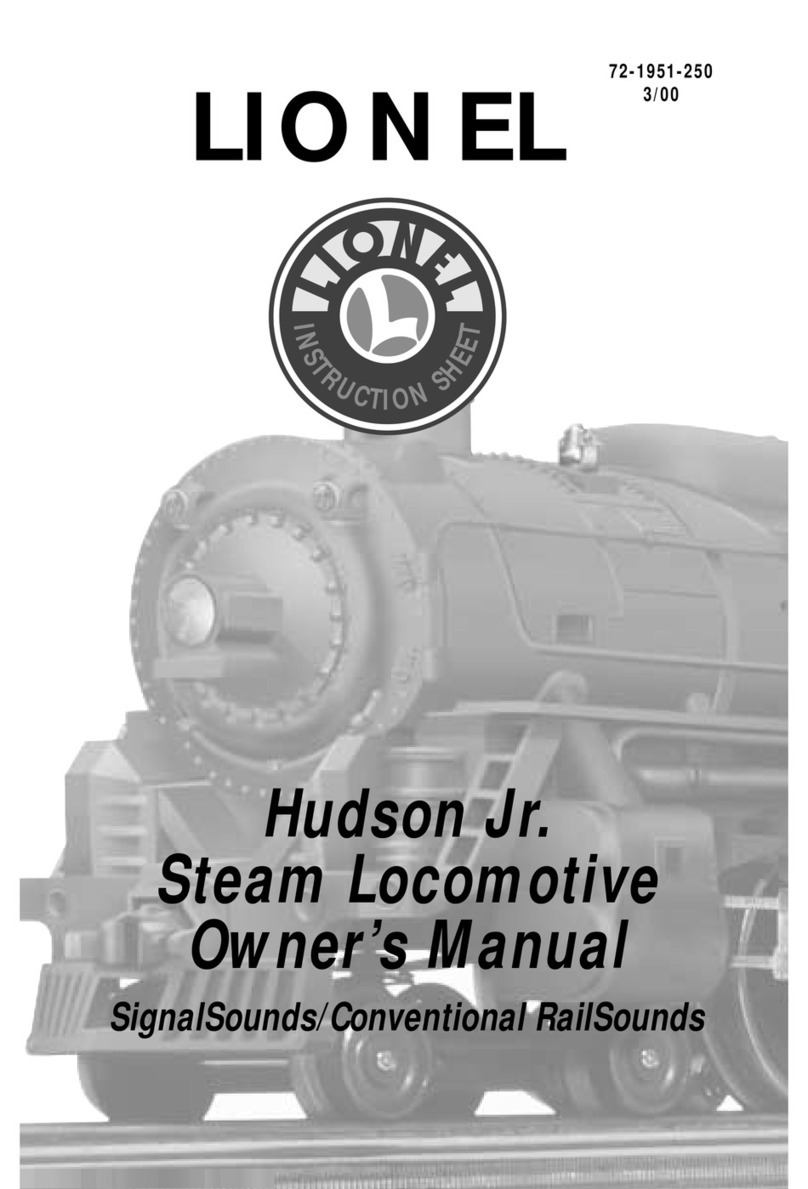Lionel SD40 User manual
Other Lionel Toy manuals
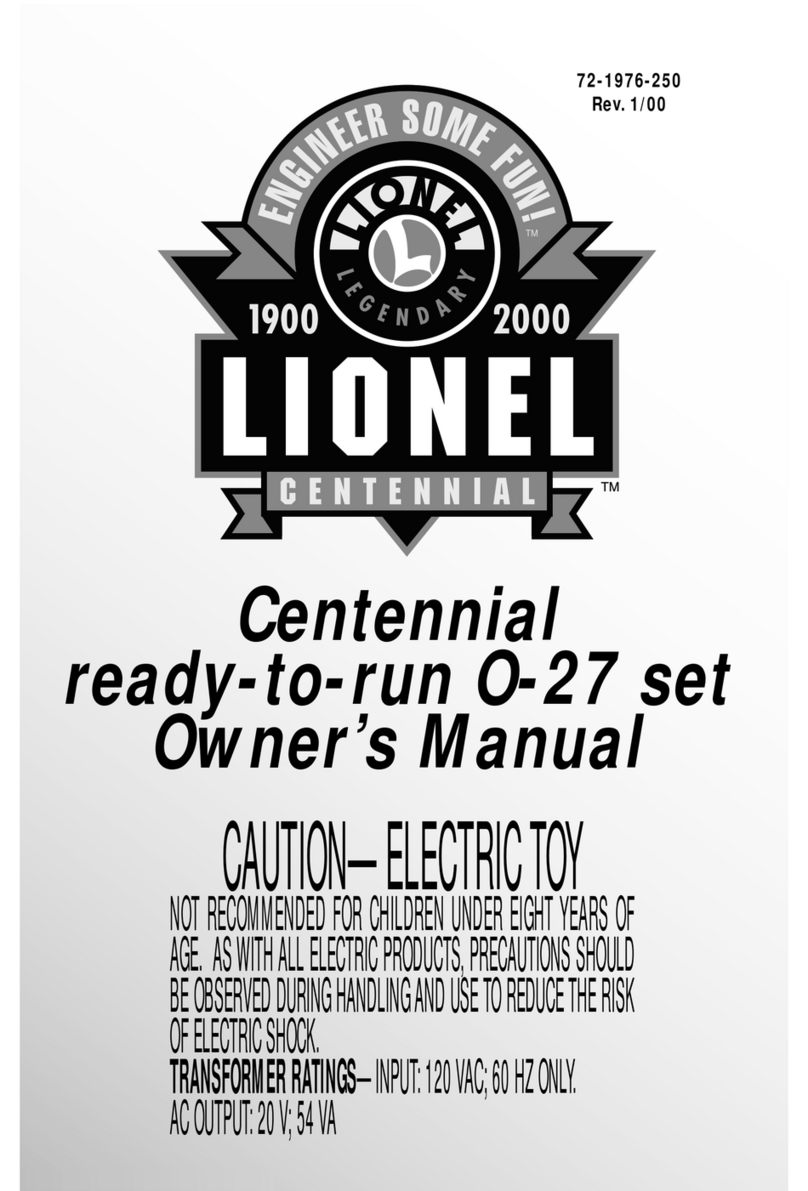
Lionel
Lionel Centennialready-to-run O-27 set User manual

Lionel
Lionel Rio Grande General User manual
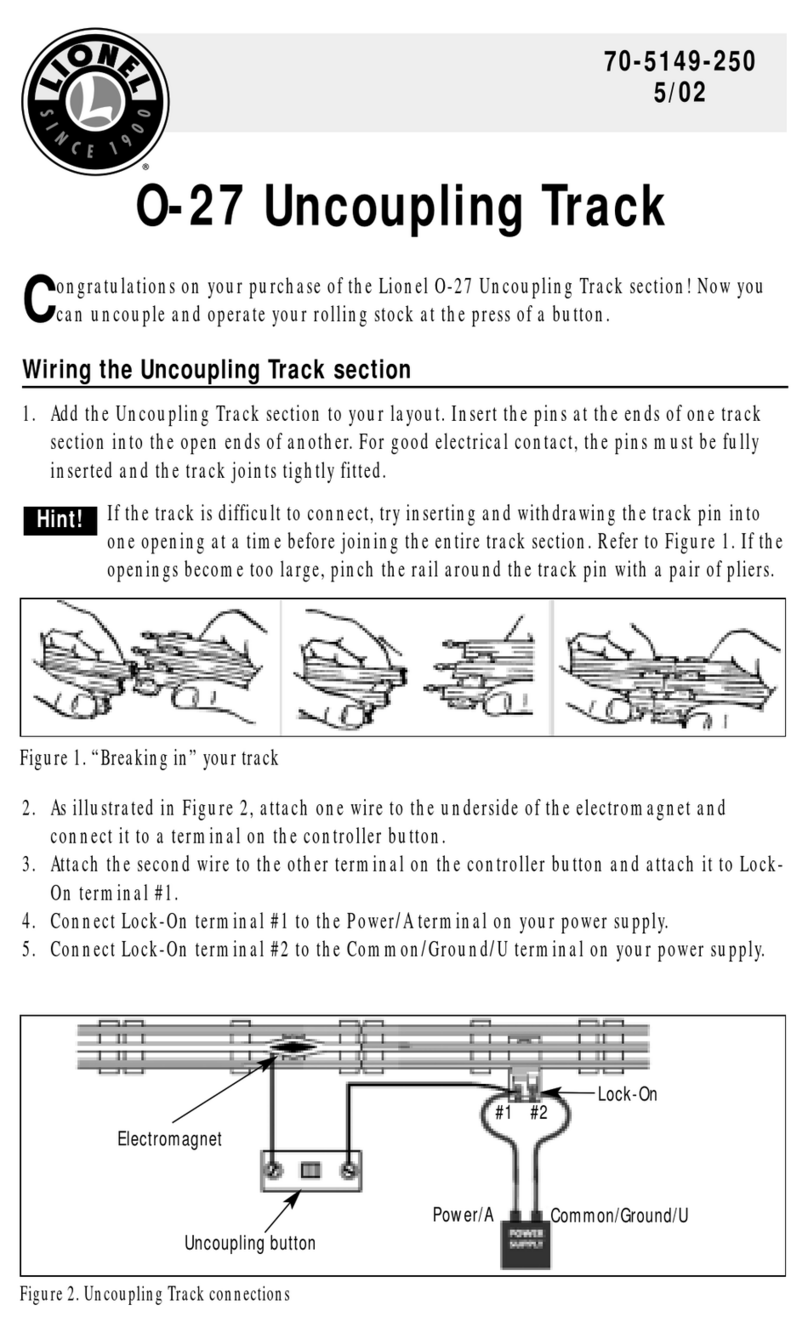
Lionel
Lionel O-27 Santa Fe FT Passenger set User manual
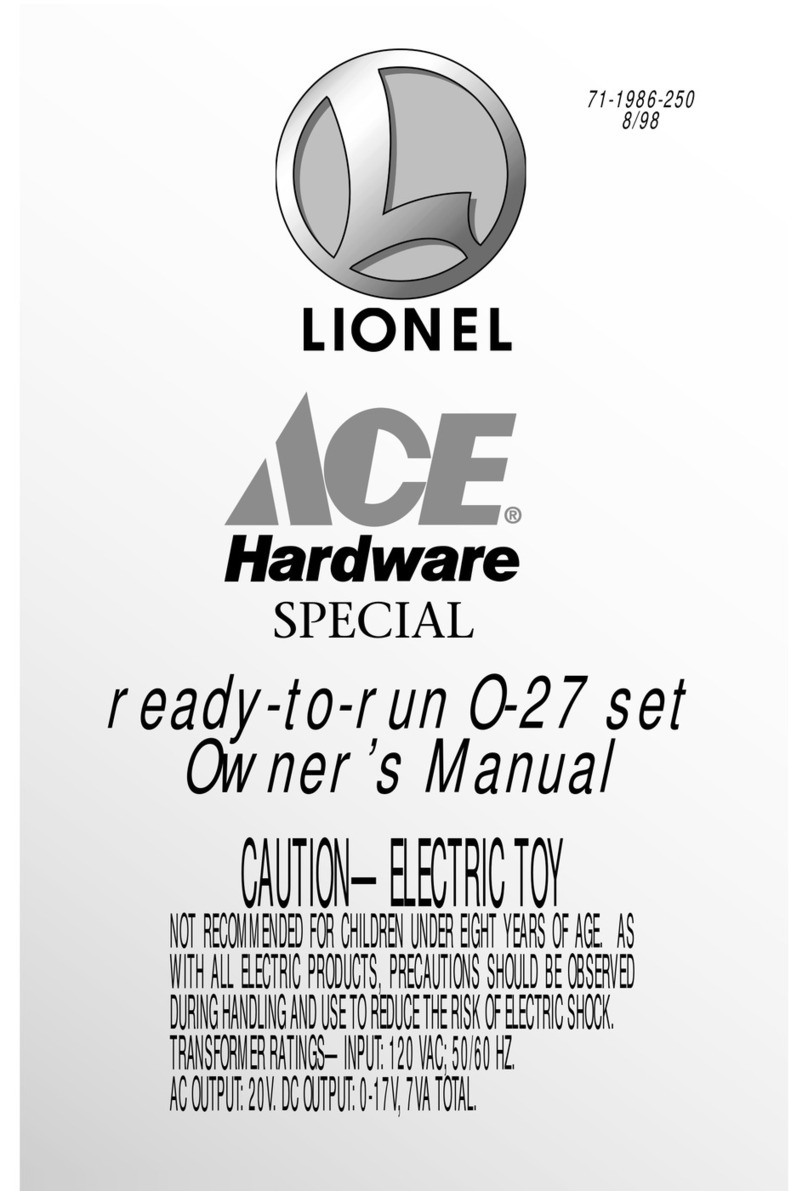
Lionel
Lionel O-27 Santa Fe FT Passenger set User manual
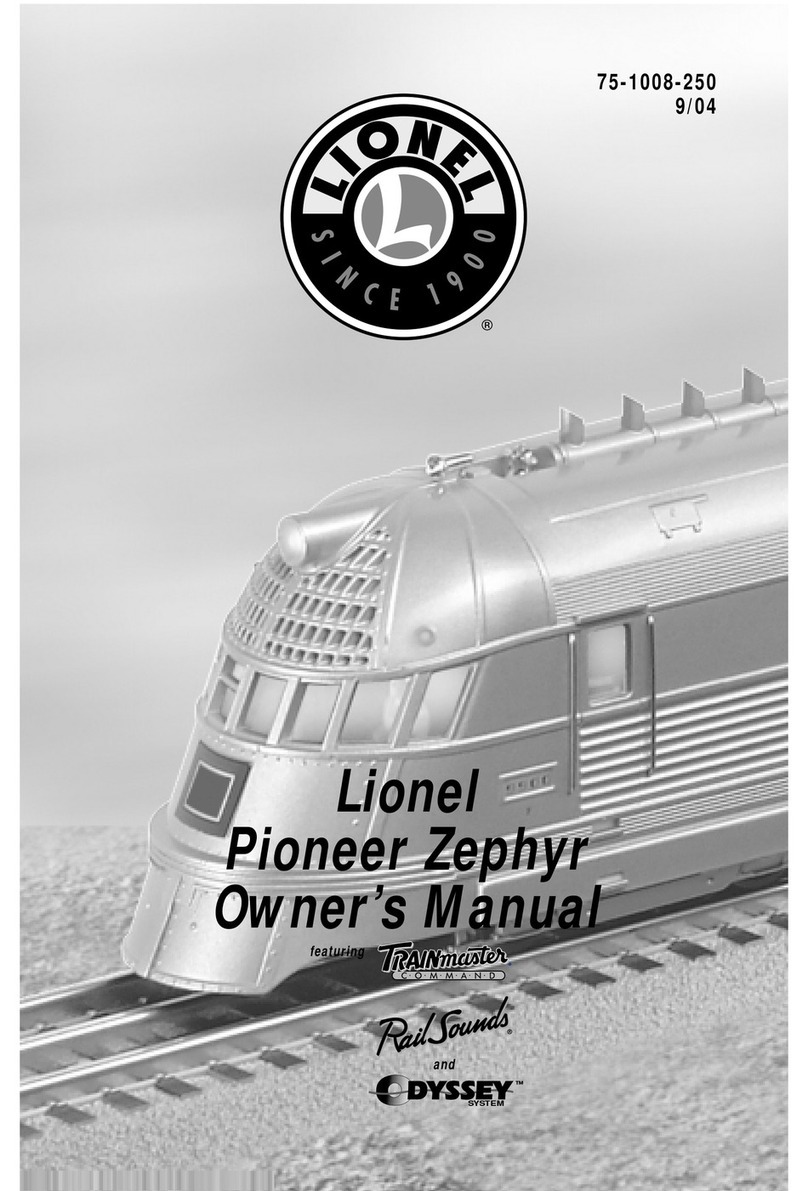
Lionel
Lionel Pioneer Zephyr User manual

Lionel
Lionel American Flyer 4-8-4 Northern SteamLocomotive and... User manual

Lionel
Lionel AC6000 User manual
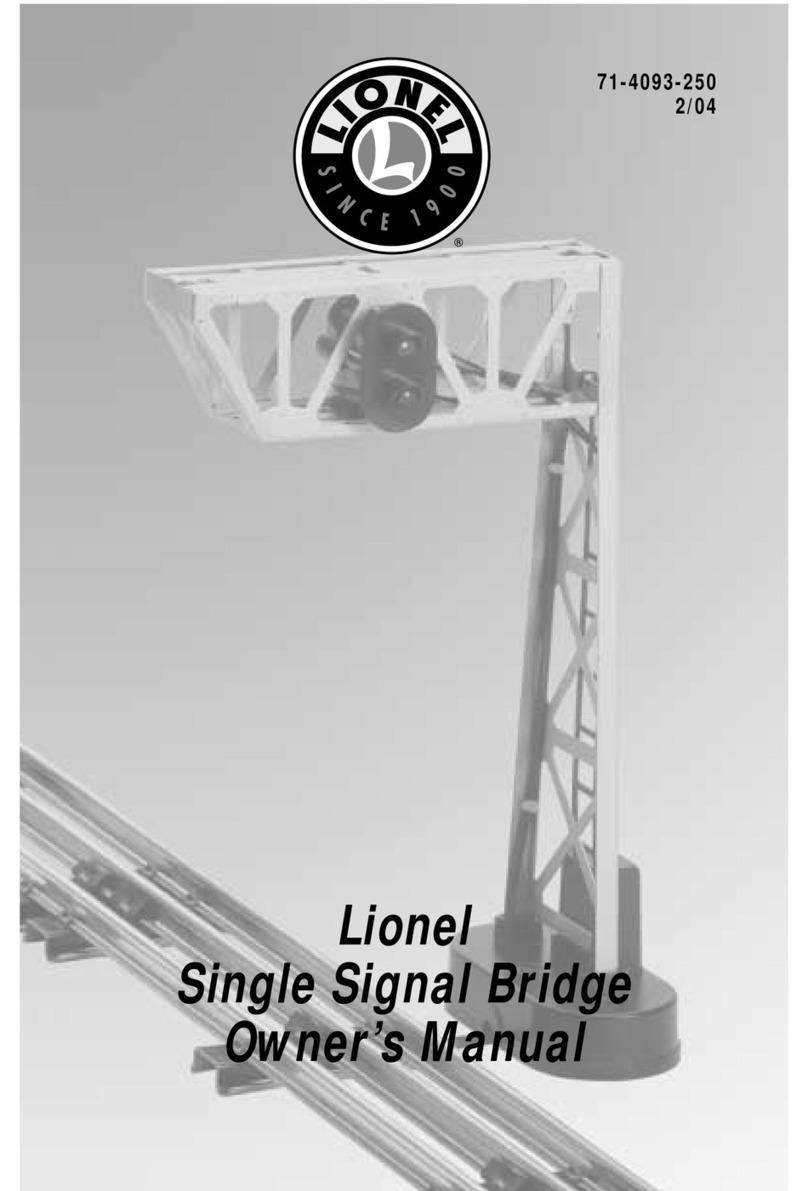
Lionel
Lionel Single Signal Bridge User manual
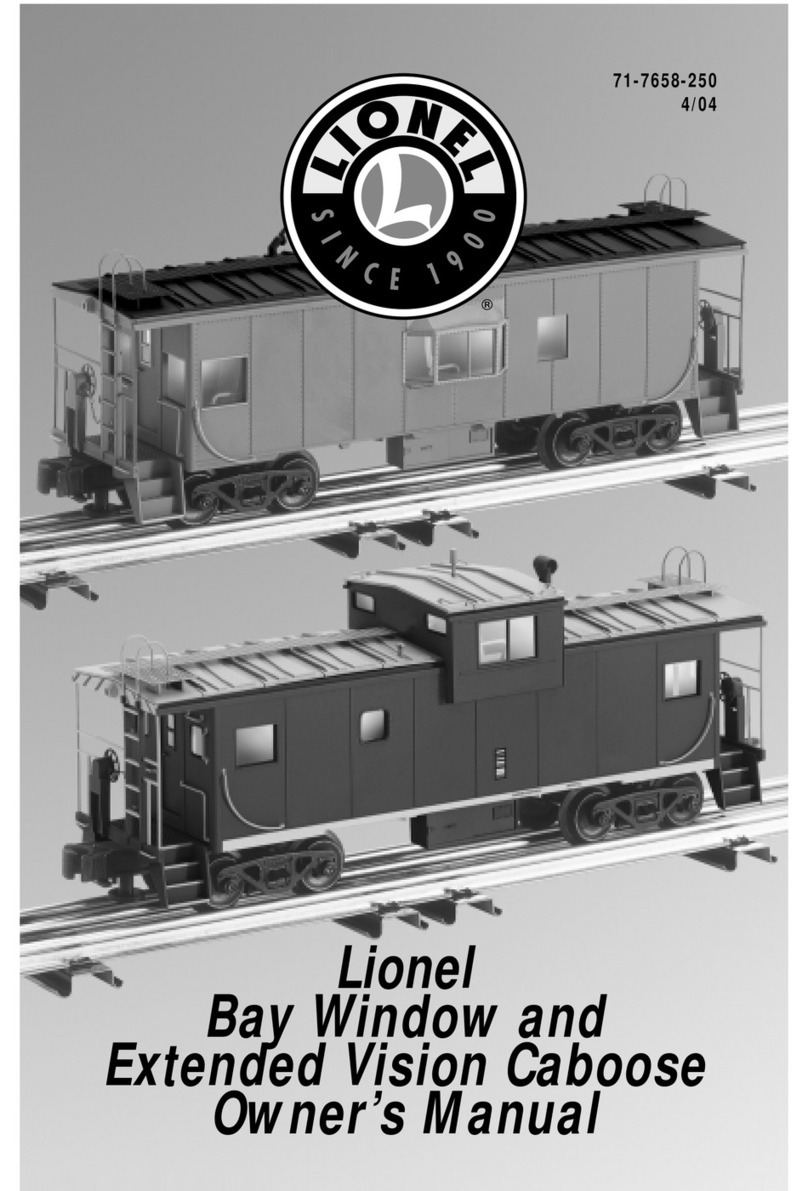
Lionel
Lionel Bay Window User manual

Lionel
Lionel Winter Wonderland User manual

Lionel
Lionel Auto Crossing Gate User manual
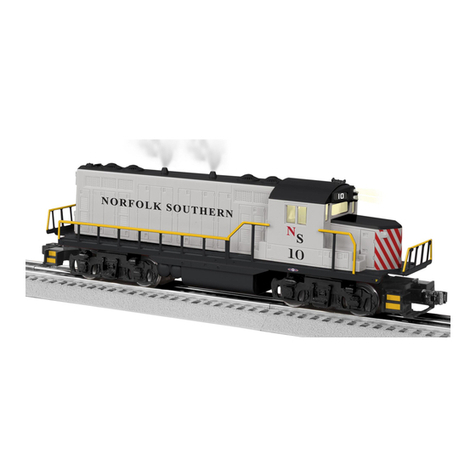
Lionel
Lionel GP-20 User manual
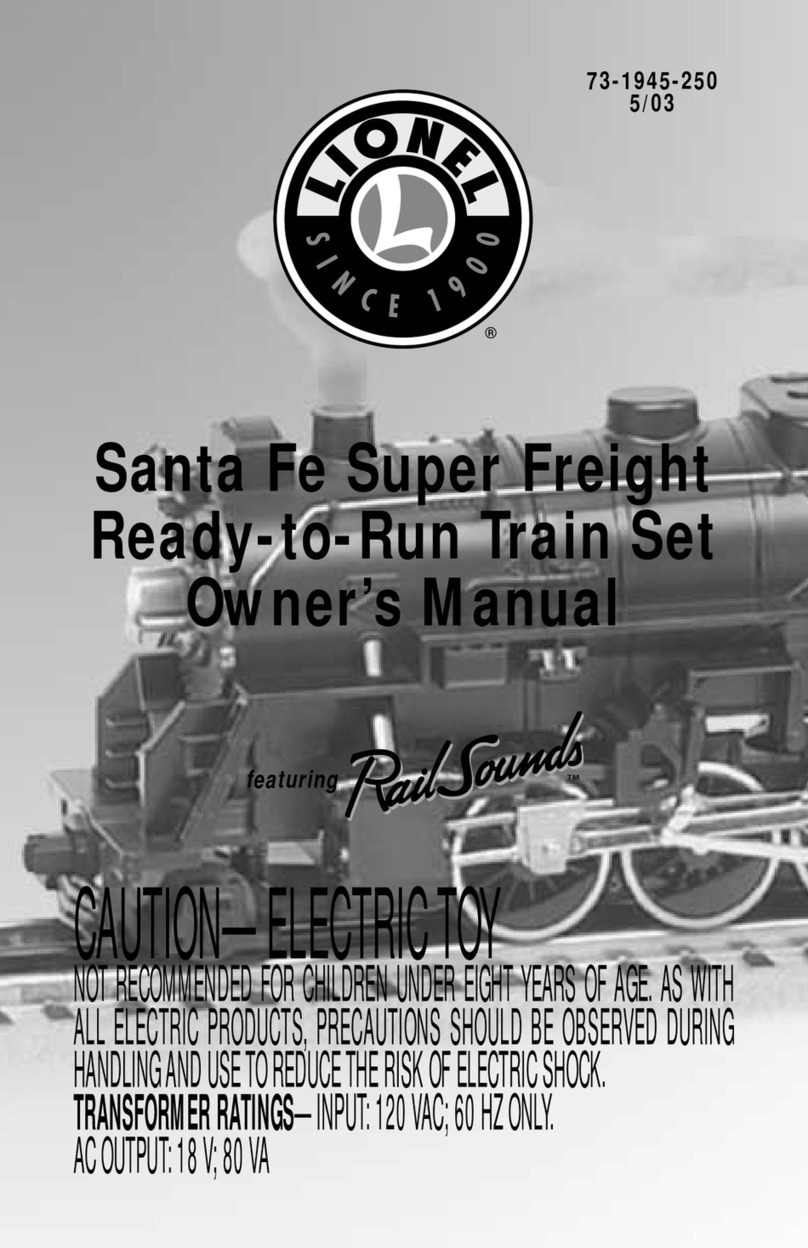
Lionel
Lionel Santa Fe Super Freight User manual
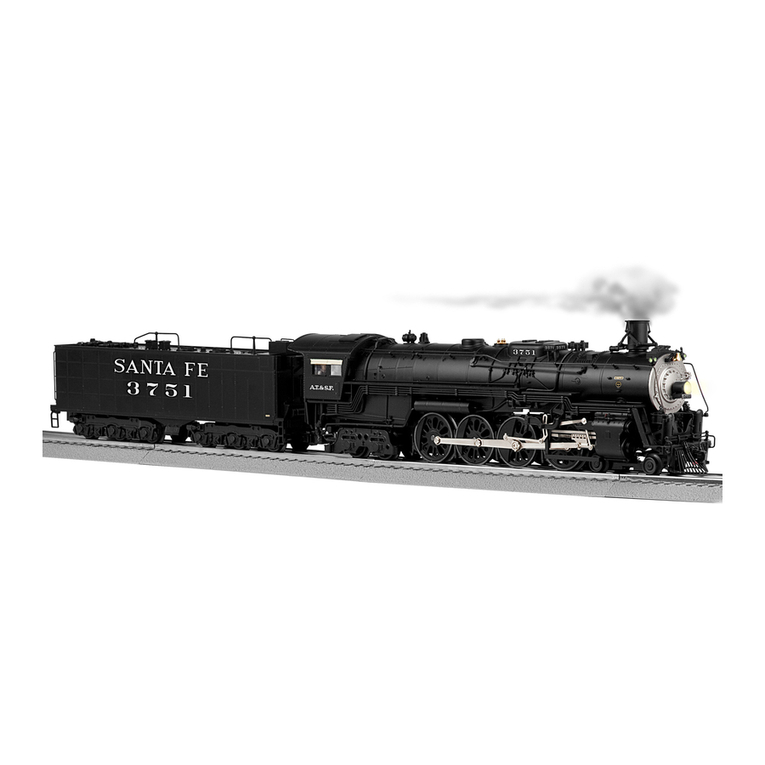
Lionel
Lionel 4-8-4 Niagara User manual

Lionel
Lionel 2544W Santa Fe User manual

Lionel
Lionel VISION Horse Car User manual
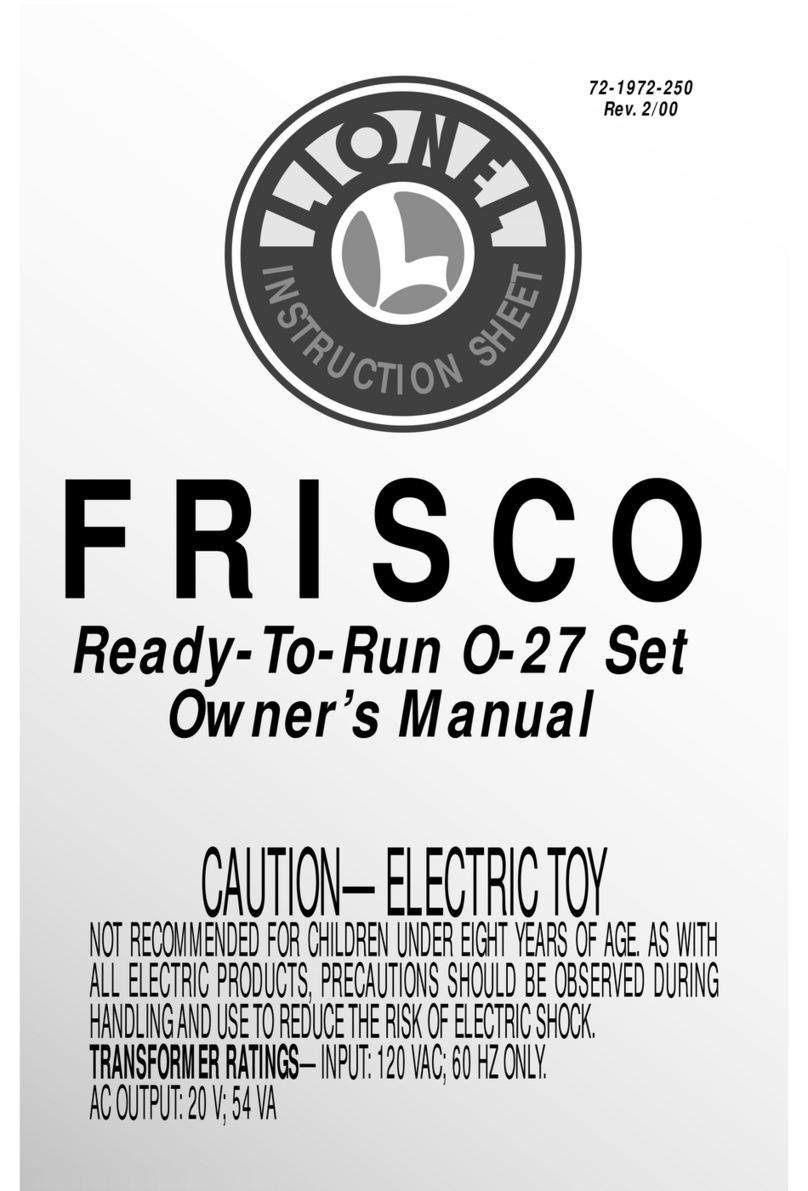
Lionel
Lionel Frisco 0-27 User manual

Lionel
Lionel 72-4272-250 User manual

Lionel
Lionel Monopoly Hudson Steam Locomotive User manual

Lionel
Lionel Lackawanna Pocono Berkshire User manual
Popular Toy manuals by other brands

FUTABA
FUTABA GY470 instruction manual

LEGO
LEGO 41116 manual

Fisher-Price
Fisher-Price ColorMe Flowerz Bouquet Maker P9692 instruction sheet

Little Tikes
Little Tikes LITTLE HANDIWORKER 0920 Assembly instructions

Eduard
Eduard EF-2000 Two-seater exterior Assembly instructions

USA Trains
USA Trains EXTENDED VISION CABOOSE instructions

